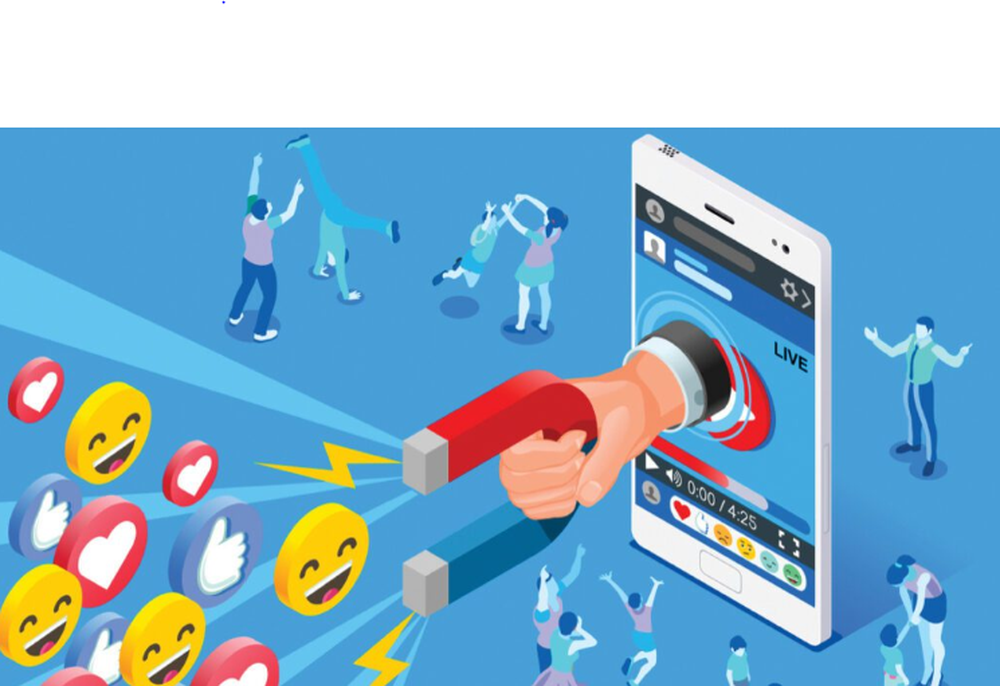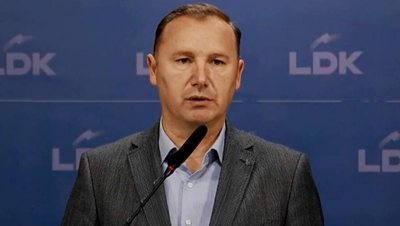
In an Albania where every corner of Instagram lights up with the LED lights of the latest “haul” or the filter of a “perfect” day, influencers have taken on a status that was once reserved only for classic VIPs. With a phone in hand and an audience built on an algorithm, they have become economic engines that generate significant income, now also under the surveillance of the Tax Administration…
On Albanian social networks, every morning begins with a "story." A coffee in the morning light, an "unboxing," a sweet-voiced greeting for followers, a collaboration coded as sincere love for a new product.
On the surface, this is a modern ritual, a daily, intimate, and harmless form of communication. But behind this minimalist narrative lies a much larger financial reality than meets the eye: a shadow economy that operates through views, likes, and an audience that converts into tangible income.
In Albania, where the majority of young people are active users of social networks and where the digital advertising market has grown by over 25% each year since the pandemic, the influencer phenomenon is no longer a minority trend, but a central part of how everything from face cream to self-esteem is consumed, advertised, and sold.
And yes, even "mind" is for sale! And yet, for years, this income has not been included in the state's fiscal logic, creating a dangerous vacuum: on the one hand, we have citizens who earn tens of thousands of euros a year; on the other, a state that until yesterday didn't even know where to look for it.
In the announcement a few months ago by the General Directorate of Taxes, based on verifications with banks, it was stated that over 33 million euros were generated by individuals through digital platforms such as Meta, Facebook, YouTube, Google, etc.
The figure is official, but it does not actually represent the entire market; it is just the tip of an iceberg of immeasurable revenues, which, due to the decentralized and informal nature of the sector, are neither documented nor controlled.
This reality is changing. For the first time, individuals who generate income from social platforms are invited to declare their earnings on the annual DIVA 2024 form.
And if for most freelance professionals, this date was expected and accepted, for many influencers it represented an existential dilemma: to admit that they are businesses and enter the system, or to continue to remain in the shadow of fame, without accountability and responsibility.
Aneid Kaloti, founder of the “SHET Industry” platform, which closely follows the developments of creative markets, states that currently, management is done by genuine agencies, but the total formalization of the market is a matter of time. “We are witnessing a new economic reality that is challenging the traditional model of entrepreneurship.
"When the income of a girl who publishes a 'morning routine' video exceeds the income of a small business that pays rent, insurance and taxes, the state can no longer turn a blind eye. The same logic should apply to everyone: if you earn, contribute," he says.
Influencers have become the most powerful engines of commercial and often cultural communication. They influence purchasing decisions, the values that are promoted, the way young people see themselves, success, bodies, fashion, and identity.
And they exercise this influence without any institutional oversight, without training in social responsibility, without mandatory ethics. They are an alternative media with massive influence, but without an accountability structure.
Tomi Kallanxhi, founder of “Big Media Expert”, articulates this gap more directly: “In any serious market, influencers are not simply people with many followers, they are commercial entities.
"They have agreements, contracts, legal obligations. In Albania, the opposite happens. Fame is perceived as sufficient to justify immeasurable income. This has distorted the way work, success and responsibility are viewed. It has also distorted the market of digital marketing agencies, not all of them are formalized," he claims.
The problem is that many influencers are not simply unscrupulous; they operate in an ecosystem where informality is the norm. Payments for collaborations are often made in cash or through platforms that are not accounted for in the Albanian tax system.
Some of them even with clearing exchanges. No contract, no invoice, no declaration. But is the Albanian influencer often the victim of a system built to promote concealment and not transparency?
In Western countries, this debate is a thing of the past. France, Italy, and Germany have long included the digital industry in their tax and labor law systems.
Under the new 2024 European Union law, influencers are required to clearly label sponsored content, declare commercial partnerships, and pay social contributions like any other independent professional. In Albania, this ethic is still far away, being a very young and unstructured sector.
The formalization of this industry should not begin with fear, but with education, says Selami Xhepa, an economic expert, for "Monitor." According to him, the state cannot impose fines without first offering tools for orientation and structuring.
"These individuals need to understand how to open a NIPT, how to issue an invoice, how to make an online self-declaration, how to be included in social and health insurance schemes."
Otherwise, any attempt to include this sector in the tax system will fail and turn into a cultural battle, where fame clashes with bureaucracy, and where media victimization prevails over fiscal logic,” says Mr. Xhepa.
Big profits?
Aneid Kaloti emphasizes that the payment an influencer receives is not determined solely by the number of followers, but by a combination of factors related to correctness towards the public and the way of communicating with them.
He emphasizes that it matters whether a person is simply a public figure or actually interacts with the audience, sharing moments from everyday life, such as clothing, cooking, vacations, or various events.
These elements make the relationship with followers closer and more authentic, increasing the influencer's value in the eyes of businesses.
According to him, another important indicator is the analysis of the numbers, which includes not only followers, but also the level of engagement, visibility and the real impact that the influencer has on the audience. These measurements help brands understand whether the investment in a collaboration is justified and what benefits they can get in return.
Mr. Kaloti adds that public figures, especially those who are well-known on media screens, are usually paid more.
The reason, according to him, is related to the image they have built and their consolidated reputation, which makes it easier for brands to associate their product or service with a trusted figure known to a wide audience.
According to Tomi Kallanxhi, CEO of Big Media Expert, the influencer market in Albania has evolved significantly over time. Agencies currently play a key role as a bridge between influencers and companies, structuring collaborations and helping to professionalize the connections between the parties.
He emphasizes that digital marketing has already taken the lion's share of the "pie" from traditional marketing, companies are increasingly oriented towards this model. For this reason, forms of cooperation have developed into packages that include stories, posts and reels on Instagram, and payments range from 50 euros for a photo to over 5 thousand euros per package.
According to Mr. Kallanxhi, payments do not depend on the number of followers, but on the reactions that the influencer generates, specifically on how many times the posts appear on the followers' screens during a month.
It is also essential that the product reflects the influencer's audience; for example, a model is not suitable for advertising a baby product, as the audiences need to match to maximize effectiveness, he concludes.
Payments for influencers in Albania
Single photo on Instagram
It is often used for quick and direct promotions of products or services. The price starts at 50 euros and increases depending on the audience and level of engagement.
Sponsored stories
One of the most popular formats, as it allows for quick and interactive communication with followers. Payments usually range from 50 to 150 euros for a story, with additional options if a link to a product or a series of stories is included.
Reels / Short Videos
They serve to show the product in action, generating more organic visibility. The price is usually 100 to 500 euros, depending on the creative idea, the length of the video, and the quality of the production.
Complete packages (posts + reels + story)
For structured marketing campaigns, companies choose combined packages that offer ongoing exposure. These packages can reach over 5,000 euros, especially when a well-known public figure is involved or when the collaboration lasts for several weeks.
Factors affecting payment
The prices do not depend only on the number of followers, but more on the real engagement that the influencer generates (likes, comments, shares) and the match of the product with his audience. An involved and trustworthy audience is the key to a successful collaboration. / Taken from Monitor






















